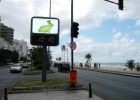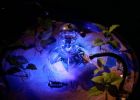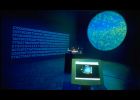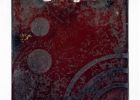Medienphilosophie als „Kommunikologie” – Vilém Flussers (1920-1991) Phänomenologie des Medialen
Despite his ambivalence towards the concept of “media”, Vilém Flusser is considered one of the foundational figures of media philosophy. His complex and associative thinking is highly sceptical with regard to traditional science-orientated media concepts. Flusser’s unique approach to media theory is fundamentally a phenomenology of the media. To capture these tensions the essay pursues a work-inherent interpretation. The essay delves into Flusser’s “Communicology” focusing on his ideas about texts, codes, symbols, and the interplay between media and human thought. One main thesis of the paper is that Flusser emphasizes in his work the need for a nuanced understanding of media philosophy, considering diverse methodological approaches and the evolving nature of media in contemporary society.
Flusser's Take on Media Pedagogy
There is no non-medial perception. However, the apparatus producing techno-images tends to make us believe in something like an immediate perception. It suggests that we do not have to learn to decipher the programs behind those images. There is no possible revolution against this mechanism within the world it has created. We need to learn how to analyze these programs and to use them ourselves. Therefore, we need a pedagogy that is also - but not only - media pedagogy and exceeds the conventional realm of media literacy. Can any kind of pedagogy afford to exclude an aspect of the world as central as mediality? Media pedagogy should not be an addition to pedagogy but rather one of its integral parts. It has to teach a critique of images. We have to learn to distrust our own eyes. And we have to realize the slumbering potential for dialogue in the communication structures. We all have to become programmers. Otherwise society will decompose into factions of producers and recipients. And all of this will have to take place in our schools that otherwise will become obsolete and leave our children without the tools of understanding, criticizing and changing the world. Then, democracy would be no longer tenable.
Libertad y poshistoria en la filosofía de la fotografie de Vilém Flusser
The object of this research is to trace Flusser’s thoughts on freedom and history as they appear in his philosophy of photography. The investigation focusses on the function of the author of the photograph in relation to apparatuses and programs. It extends, as I will try to show, to the activity of the spectator and of everyone who interacts with images. I follow Flusser’s methodology, which is to relate the philosophy of photography to the theory of games. And that's why I speak about the player, the toy and the game involved in photography. I think Flusser's main inspiration was Wittgenstein of the Tractactus and his theory of the emancipation of meaning from truth or factual falsity. Here I find the ontological key to his philosophy of photography as a philosophy of freedom.
From Hegel to Zielinski: An Essay on German Media Philosophy
This article discusses an original media philosophy emerging in the German-language since the 1980s. Its relevant contexts described here include phenomenology, social critical theory (the Frankfurt School), and deconstructionism. The starting point of this paper is Hegel’s romantic vision of culture as language, and the area of meanings conveyed by speech and writing, whereas the conclusion is the vision of culture permeated by digital technologies. The so-called “medial turn” is a new opening for philosophical reflection under the aegis of Medienphilosophie. The presentation of its conceptual framework and analytical style is addressed here by the methodological and philosophical devices of Siegfried Zielinski’s media archeology.
Mit anderen unsterblich werden. Der Dialog bei Vilém Flusser
This essay deals with Flusser’s theory of inter-subjectivity by reflecting upon immortality, which can originate in dialogical exchange with others. Flusser’s utopia of a telematic society will be discussed as an utopia of dialogical living, referring to Martin Buber’s dialogic principle. This contribution would like to develop Flusser’s thoughts on a responsible society in an age of massification through the media. In this context, the experience of Bodenlosigkeit as well as the idea of self-projection are of fundamental significance.
Verso una teoria dei gesti
In his work “Gesten. Versuch einer Phänomenologie,” Flusser investigates the concept of gestures. Starting from a first definition of gestures, which explores the “causality” of movements, Flusser then discusses the meaning of the concept “gesture” in the broader context of culture as a symbolic expression. In this essay, we discuss Flusser’s view on gestures by studying them with respect to their function and meaning in communicative processes, both obvious and hidden. From a semiotic point of view, we analyse Flusser’s thoughts on the function and the properties of gestures and provide a definition of “gesture”, which reflects its cultural, symbolic, and significant aspects. Particular emphasis is given to the role of gestures in communicative processes and their imbedding in the cultural environment.
Aula em fluxo: arte, comunicação, educação
By exploring performance concepts, this article seeks to deepen and systematize epistemological, aesthetic, and technical matters related to the interfaces between communication, education and art. To this end, it calls upon transdisciplinary methodologies implicated in phenomenological research. It further seeks the ongoing integration between theoretical and technical experiences, as well as scientific methods and creative artistic processes.
The Art of the Vampyroteuthis - Vilém Flusser, Vampyroteuthis infernalis: His Art
In this excerpt from his hybrid text of philosophical fiction, Vilém Flusser examines the history and future of human art and communication from the perspective of a giant deep-sea squid, the Vampyroteuthis infernalis. Fictionalizing some of the accepted biological details about the extant species of squid, Flusser oscillates between an encyclopedic description of the animal’s anatomical and behavioral characteristics and a cultural history of human art making. He proposes the world of the Vampyroteuthis as a model for human communication in the age of television, film and digital images. With his skill for de-familiarizing everyday aspects of human life, Flusser holds the molluscan creature up to his reader as a mirror in which human behavior can be considered from an opposing, almost inhuman perspective.
Invisible in plain sight, and as alive as you and I: An Interview with Eduardo Kac
Eduardo Kac’s visionary oeuvre shares with Vilém Flusser an exploration of language and communication without regard for the usual disciplinary boundaries, thus often combining art, science and technology with communication, philosophy and poetry. In this interview, Kac talks about his transgenic creations, which began in 1999, and include Alba, his famous and controversial GFP Bunny born in 2000. Kac also examines the different meanings of genetic manipulation in art, science and religion, and further points to the future of bio art as well as that of his own work.
Interview avec Fred Forest / Entrevista com Fred Forest
This conversation about Vilém Flusser, between new media art critic Annick Bureaud and media artist Fred Forest, took place in Paris on December 22, 2008. Forest is a pioneer of video, media and network art whose actions and interventions establish pauses and disruptions in the usual flow of communication. His works are frequently critical, often humorous and on occasion insolent. Forest also writes and theorizes his own artistic creations besides maintaining a constant dialogue with philosophers and theorists. Flusser was one of those with whom intellectual exchange was always densely rich, productive and collaborative. In this interview, Forest speaks about some of his video projects developed with Flusser, as well as his news media and public interventions in the 1973 São Paulo Bienal, for which Flusser served as curator. Bureaud and Forest’s conversation bring to life the energy and more human, intersubjective exchanges that characterized the Forest-Flusser friendship, and which are seminal to both artistic creation and intellectual thought. Bureaud insightfully points out that unfortunately such vivid encounters are rarely found in scholarly research and in the history of art. In the hands of Forest and Flusser though, often overlooked gestures, shared for instance in a seemingly banal conversation on a summer afternoon or on a subway ride in Paris, become fully meaningful.





